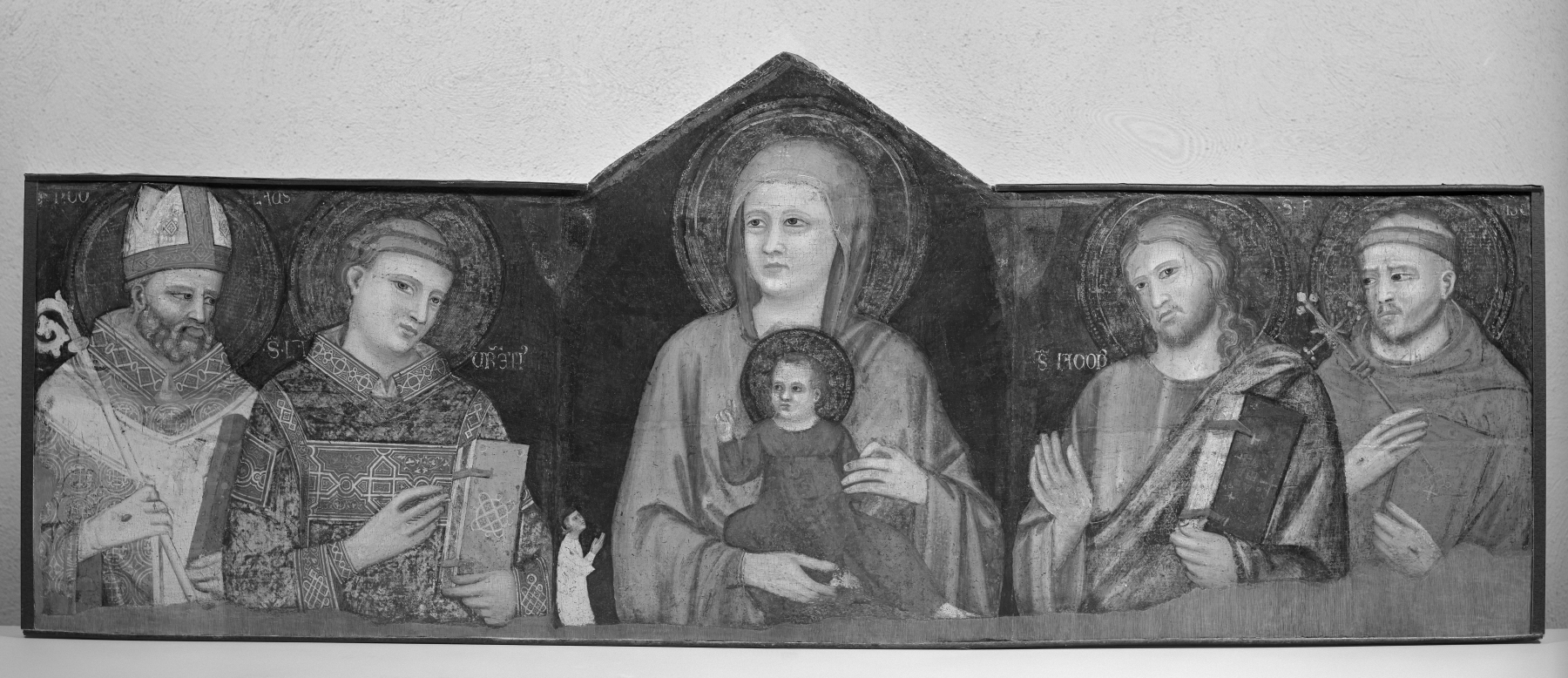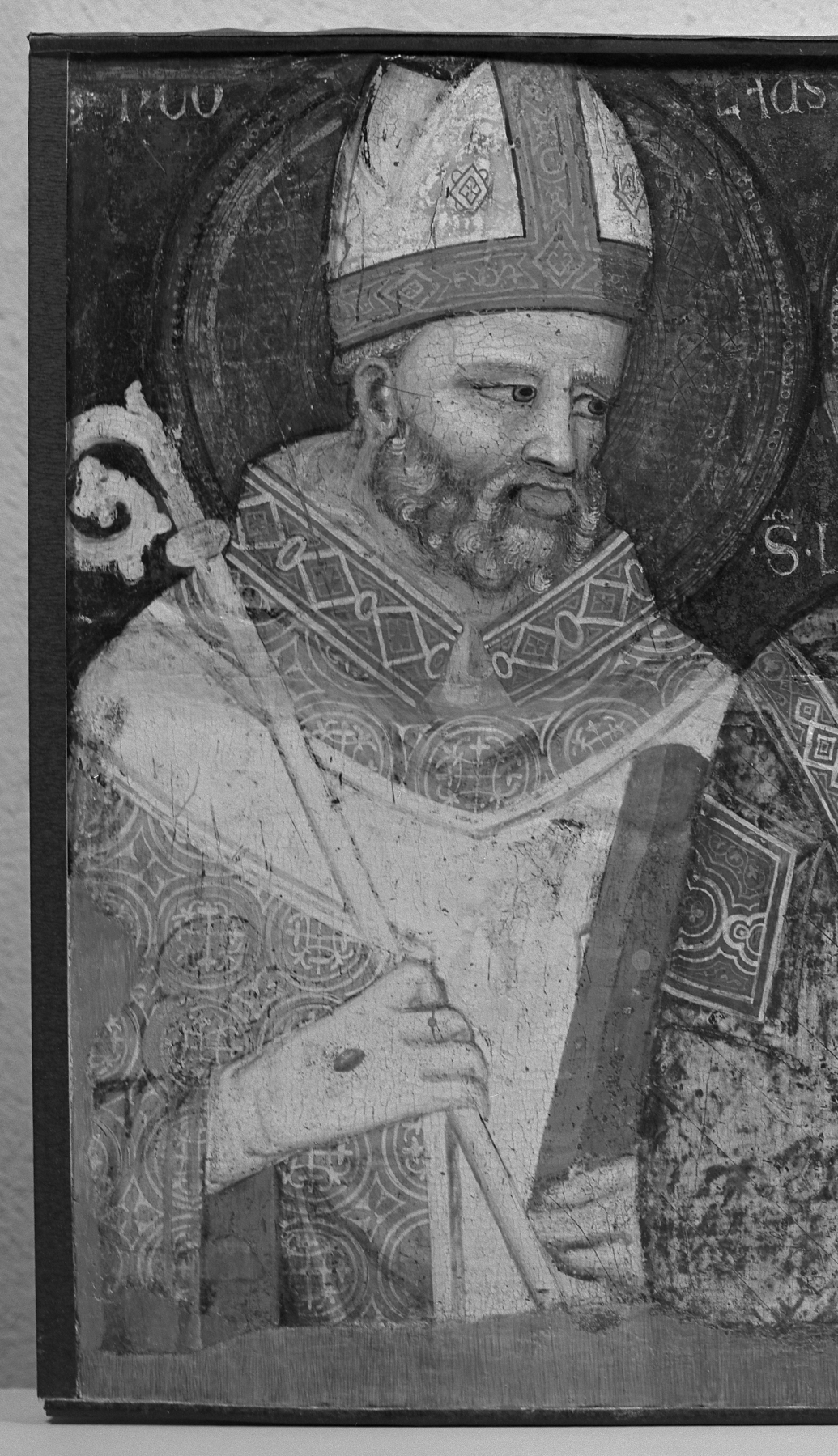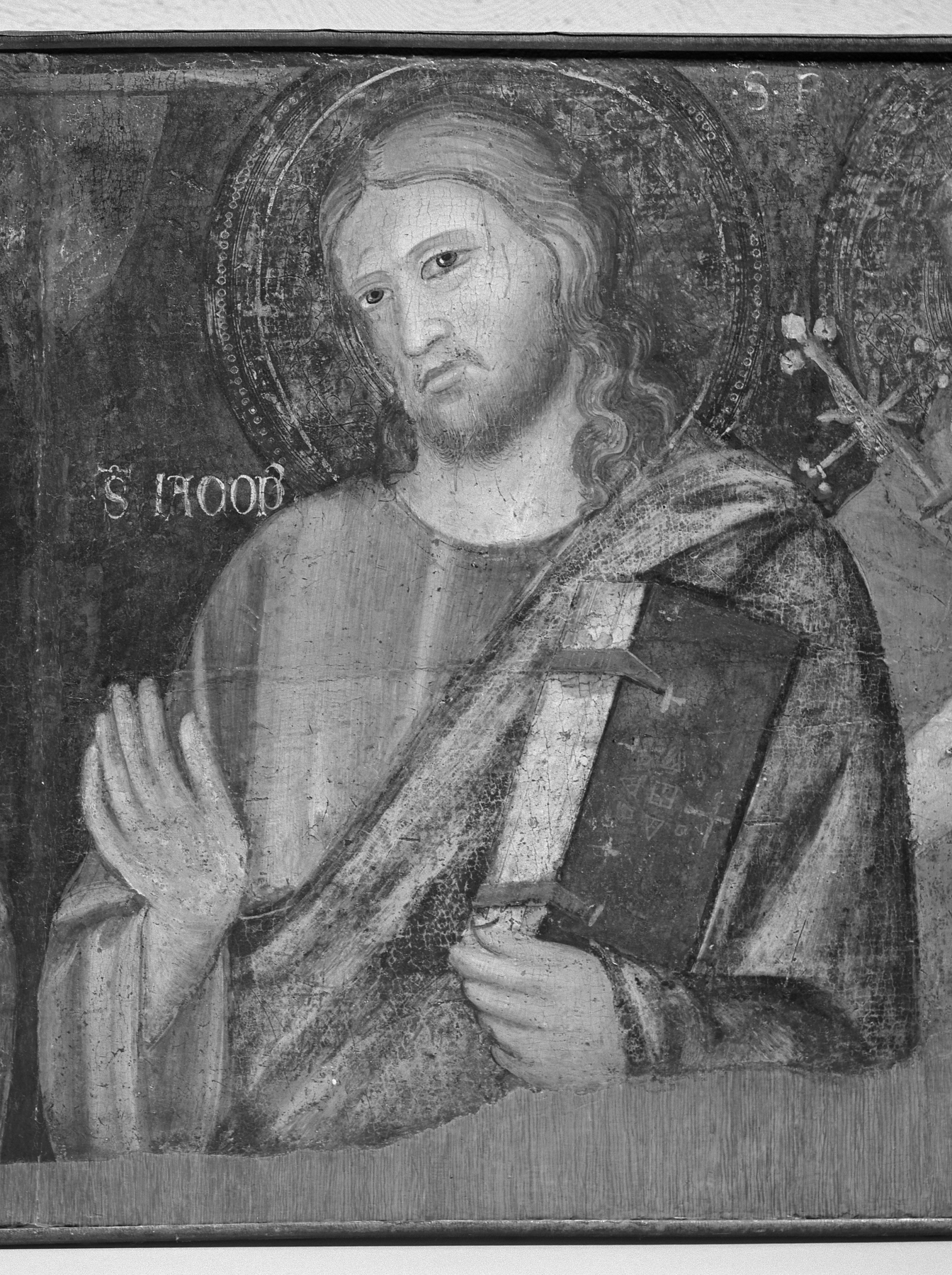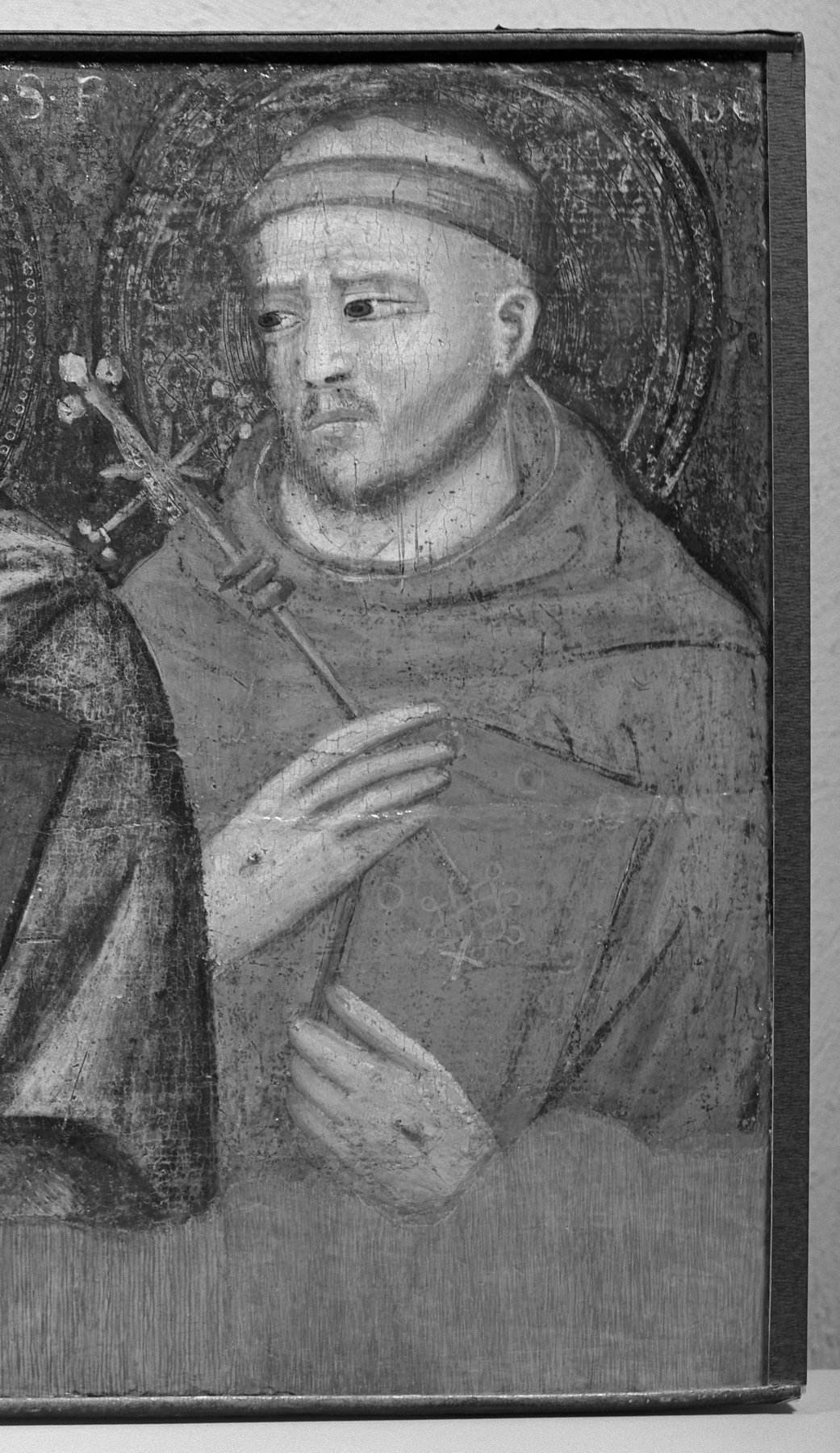The Virgin and Child with Saints
(Medieval Europe )
Pacino di Bonaguida was one of the most prolific artists in early Renaissance Florence. Skilled in both panel painting and manuscript illumination, he executed numerous altarpieces for churches in and around Florence during the city’s great growth in wealth and power in the first half of the fourteenth century. In this unusual and little-studied altarpiece by Pacino, the Virgin and Child are flanked (left to right) by Saints Nicholas, Lawrence, James the Greater, and Francis of Assisi, with the painting’s donor appearing in smaller scale to the Virgin’s right. The monumentality of the figures recalls the painting of the groundbreaking artist, Giotto di Bondone, who was also active in Florence in the early fourteenth century. Innovative features in this traditional composition include the dynamic pose of the Christ Child with his legs stretched out and the depiction of the saints overlapping each other rather than appearing in individual panels. The figures’ distinctive facial features, the handling of drapery, and the particular textile patterns are characteristic of Pacino’s body of work.
The appearance of this painting has been compromised over time. The paint surface displays centuries of old abrasions and restorations, the most recent of which from the 1970’s includes retouchings in places over fills covering original paint. At some point in the painting’s history the main horizontal grained wooden panel support was cut into three pieces with two vertical cuts on either side of the Madonna. Ongoing conservation has reunited the panel pieces into one and treatment has revealed two unidentified coats of arms each displaying a boar’s head, which are found in between the Virgin and the two saints who frame her. Close examination suggests that the painting was cut down along its upper edge, and perhaps had triangular gables over each figure, like the one above the Virgin’s head. The appearance of several painting materials has changed, as in the saints’ tarnished haloes, which were executed in silver leaf incised with radiating lines (and probably glazed with a warm tone that has gone), and in the darkened pigment of the background, which was originally a brilliant blue later overpainted with another blue that has altered with time.
Inscription
Provenance
Provenance (from the French provenir, 'to come from/forth') is the chronology of the ownership, custody, or location of a historical object. Learn more about provenance at the Walters.
Private collection, Ireland; Justice James A. Murnaghan, Dublin, ca. 1930; Dr. Francis Murnaghan Fund, 1973 [mode of acquisition unknown]; Walters Art Museum, 1973, by gift.
Exhibitions
| 2012-2013 | Florence at the Dawn of the Renaissance: Painting and Illumination, 1300-1350. J. Paul Getty Museum, Los Angeles. |
| 1984-1985 | Illuminated Manuscripts: Masterpieces in Miniature. The Walters Art Gallery, Baltimore. |
| 1982 | God's Minstrel: St. Francis of Assisi. The Walters Art Gallery, Baltimore. |
Conservation
| Date | Description | Narrative |
|---|---|---|
| 7/10/1973 | Examination | examined for condition |
| 2/24/1977 | Examination | examined for condition |
| 1/25/1982 | Examination | eamined for exhibition |
| 4/9/1984 | Treatment | other |
Geographies
Italy, Florence (Place of Origin)
Measurements
Painted surface H at left and right sides: 18 7/8 x W: 62 11/16 x D: 11/16 in. (47.9 x 159.2 x 1.8 cm); Painted surface H at central gable: 24 1/2 in. (62.2 cm)
Credit Line
Gift of the Dr. Francis D. Murnaghan Fund, 1973
Location in Museum
Not on view
Accession Number
In libraries, galleries, museums, and archives, an accession number is a unique identifier assigned to each object in the collection.
In libraries, galleries, museums, and archives, an accession number is a unique identifier assigned to each object in the collection.
37.2494












